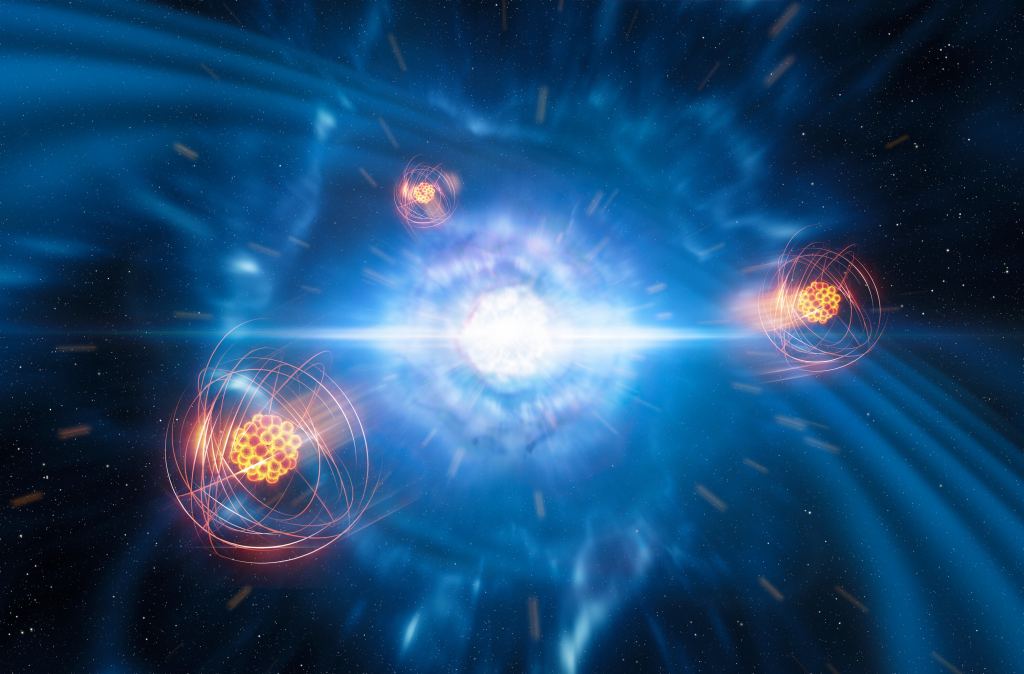When neutron stars collide, they go out with a tremendous bang, fueling an explosion up to a thousand times more powerful than a supernova. But sometimes they go out with a whimper, and a recent suite of simulations is showing why: they turn into a black hole.
The discovery of gravitational waves from colliding neutron stars in 2017 was a watershed moment in astronomy. In addition to the gravitational radiation, astronomers also observed the event with a host of electromagnetic telescopes, everything from radio to gamma rays. The combined effort revealed that the colliding neutron stars produced kilonovae, a particular kind of explosion about 1,000 times more powerful than a typical supernova.
But two years later, a similar gravitational wave signal, known as GW190425, didn't have any electromagnetic counterpart. Admittedly, it wasn't the best time for our telescopes to scan in that region of the sky, but all things considered it was relatively quiet.
How could two neutron stars collide without leaving a violent flash of radiation?
Recently a team of astronomers turned to big giant computer simulations to provide an answer. Including as much as the relevant physics as possible, they watched as pretend neutron stars collided in various ways. Specifically, they tried to mimic the merger event that led to the GW190425 gravitational wave signal.
According to the signal, the two neutron stars had a combined mass of 3.5 solar masses, but one neutron star was twice as heavy as the other. This was very different than the 2017 kilonova, which featured two neutron stars with about equal mass.
The simulations revealed that when two unequal-mass neutron stars collide, it's not just a straight-on car crash. It's a terrible mess.
The gravity of the larger neutron star is able to tear apart the smaller one, turning it into stellar shreds well before the impact. Then, instead of just slamming together, material from the smaller-torn up neutron star rains down onto the larger one, triggering a gravitational collapse and turning it into a black hole.
Once formed, the black hole eats any potential radiation signal that could have left the system. Meanwhile, the tattered remnants of the smaller neutron star continue to orbit, slowly slipping down into the black hole without a cry for help or a flash of radiation.
These simulations show how it might be possible for two neutron stars to collide without triggering a corresponding kilonova blast, potentially explaining the mysteriously silent gravitational wave signal from 2019.
 Universe Today
Universe Today

